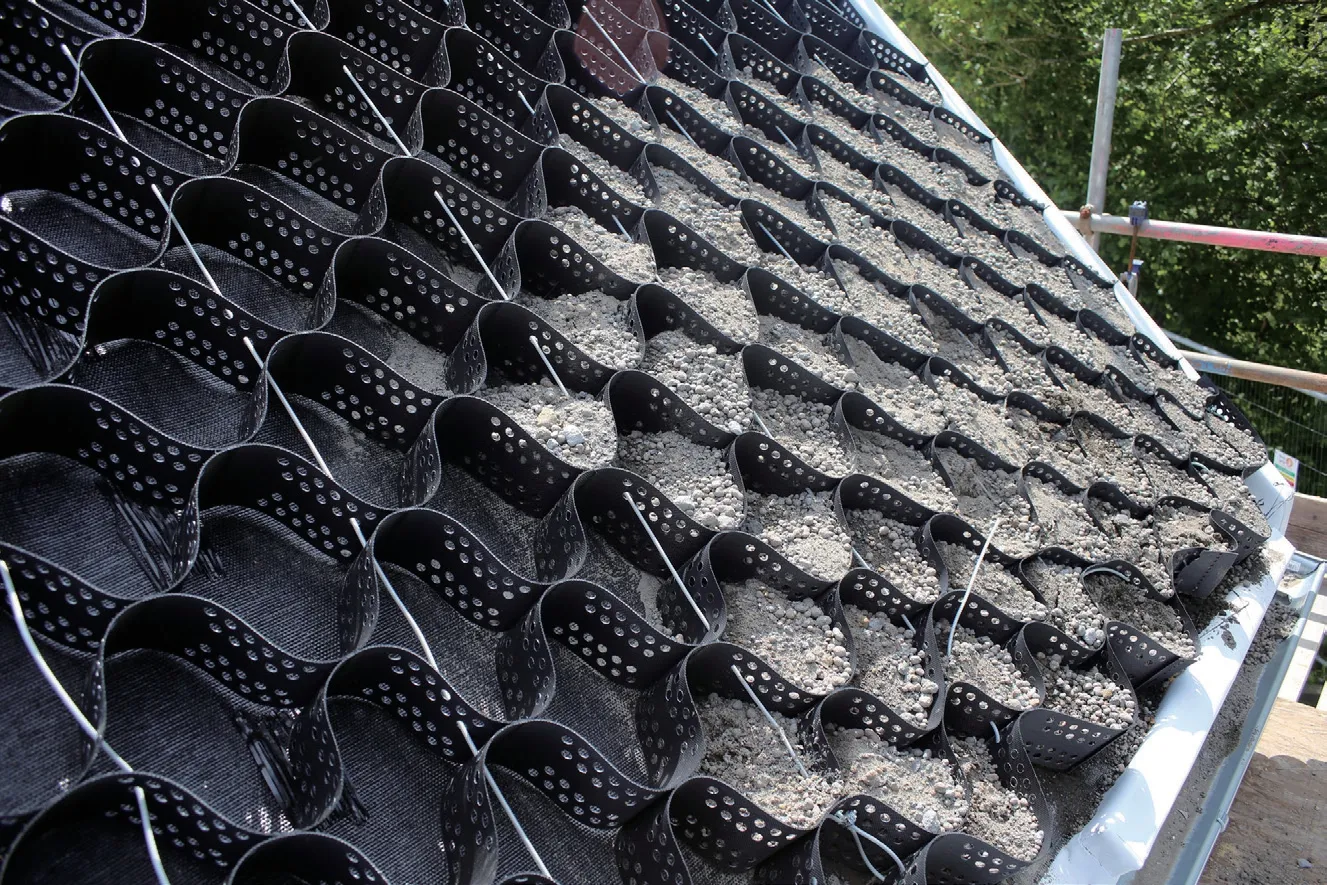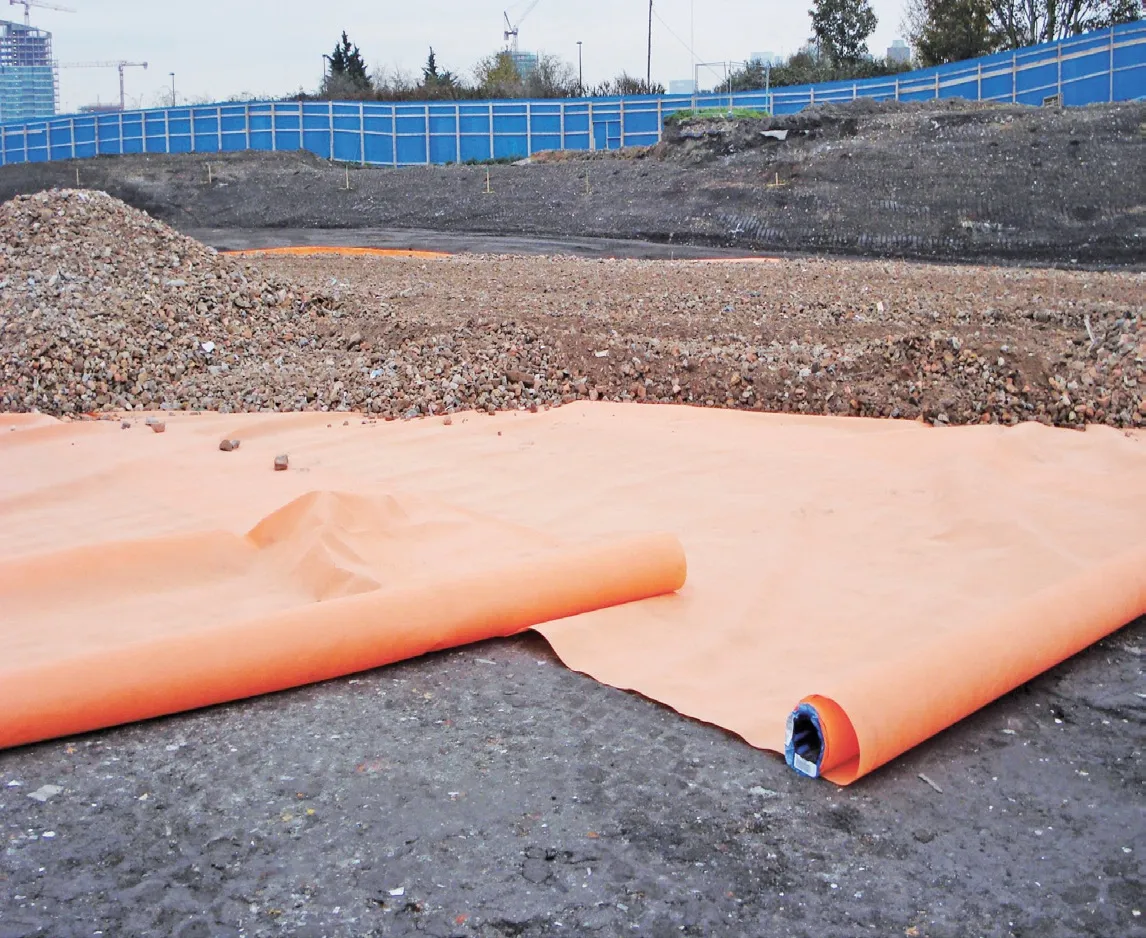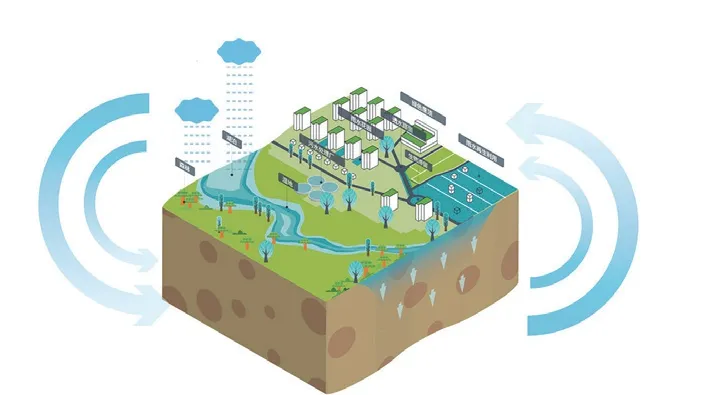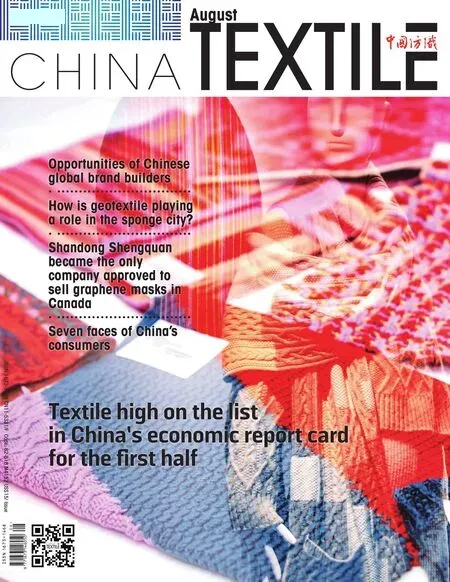How is geotextile playing a role in the sponge city?
Edited by Zhong Mengxia

On July 11th, Beijing—Tianjin—Hebei region suffered the maximum rainfall intensity since the flood season.The National Meteorological Center has been continu—ously issuing severe convective weather and yellow warning on rainstorm. In late July, Zhengzhou in Henan province experienced heavy rainfall, and the water level even reached at most as high as a three—storied building,seriously endangering people's property and safety.
Throughout the whole July, most cities including Eastern inner mongolia, the west of Heilongjiang prov—ince, western and southern Liaoning, Heibei, Beijing,Tianjin, Shandong, west and south of Henan, Anhui,Jiangsu, southern Hubei, northern Hunan, Sichuan,Chongqing, northern Guizhou, Yunnan’s west and south and southeast of Guangxi as well as other coastal re—gions experienced heavy rainfall weather. Faced with such prolonged heavy rainfall, facilities for urban drain—age and waterlogging prevention are of supreme impor—tance.
Recent years, under the lead of plan on strengthen—ing the development of urban infrastructure released by the State Council and notice on urban drainage and waterlogging prevention released by General Office of the State Council, cities across the country actively carry out various strategies, orderly promote the construction of sponge city, reduce disadvantaged effects of strong rainfall, at the same time, make full use of the resource.
What is the sponge city?
According to Wikipedia, a sponge city is a new urban construction model for flood management, strengthen—ing ecological infrastructure and drainage systems. In a much easier way to understand, it refers to a city that,like a sponge, has good elasticity in adopting to envi—ronmental changes and coping with natural disaster. It can alleviate the city's waterlogging, water resources shortage, and urban heat island effect and improve the ecological environment and biodiversity by absorbing and capturing rain water and utilizing it to reduce floods.Different from traditional cities, sponge cities adopt on the mode of conforming to nature to achieve harmony between human and the nature, protecting original water ecology, and surface flow remain unchanged. Rain water harvested can be repurposed for irrigation and for home use. It is a form of a sustainable drain—age system on an urban scale.
What is the geotextiles?
Geotextiles are permeable fabrics, when used in association with soil,which have the ability to separate, filter, reinforce, protect, save, clean, and drain. Early products are mainly permeable woven and non—woven geotex—tiles, and later, produced impermeable geomembrane. Typically made from polypropylene or polyester, geotextile fabrics come in three basic forms: wo—ven (resembling mail bag sacking), needle punched (resembling felt), and heat bonded (resembling ironed felt).
As a key component part of urban development facilities, aiming at fil—tering and protecting, geotextiles have the function of infiltration and inverted filter, which allows rain water to percolate into the soil effectively, reduces the amount of rain discharged into the plumbing system; Aiming at saving and cleaning, it also makes sure effective savings of rain and makes effect with sands and rocks to preserve rain; Aiming at using and draining, it has unob—structed drainage, good water and power conditions and inverted filtration,and is not easy to produce mud and block the pipe, which achieves the goal of comprehensive utilization of rainwater. Therefore, as sponge cities are pushed forward day by day, geotextile materials have huge potential in application and a very bright market.
Permeable pavement

At present, permeable pavement system has matured, adopting on city parks, parking lots, sidewalks, squares, light load road, etc. Mostly used in wa—ter permeable brick and cement, these permeable pave—ment materials have the shortcoming of ignoring drain—age problems and insufficient road load capacity caused by permeable system. A good permeable pavement not only needs to meet the health circle of rainfall, runoff,filtration, recycle, but has to reach the requirements of subgrade bearing capacity.
In order to solve the stagnant water in glass—roots, Hongxiang new materials Co., Ltd. had net and membrane composite structure of drainage and wa—terlogging prevention on trial, which makes water after filtered drain into the gutters on both sides of the road,and its waterproof layer also avoids the erosion of the roadbed by water. Cloth for filtering, net for draining,membrane for preventing penetration, net and mem—brane composite structure of drainage and waterlog—ging prevention addressed stagnant water completely.In the aspect of reinforcing subgrade, the honeycomb grid chamber with super—strong locking connection between the semi—rigid base layer and the perme—able pavement surface layer can effectively improve the fatigue resistance of the base layer and reduce the temperature shrinkage and reflection cracks of the per—meable surface layer.
Green Roof
Green Roof is a concept corresponding to the urban traditional Brown Roof, which can be widely understood as a general term for gardening and planting on roofs,terraces, balconies or large artificial rockeries of various buildings, structures, bridges, overpasses, etc. There is no doubt that green roof can increase green area and reduce energy and emission.
Its typical structures include base layer, waterproof layer, drainage blanket, isolation and filter layer, protec—tion layer. And geotextiles mainly use in isolation and filter layer, drainage blanket and protection layer usu—ally with the combination of geotextile cloth+geotextile net+drainage board. The function of isolation and filter layer is preventing soil of plant seed layer percolating to drainage blanket to avoid soil erosion and drain extra water of soil discharged to drainage blanket that can discharge excess water, prevent root rot and reduce the burden of waterproof layer.
In the existing roof greening drainage layer, high density HDPE board consumption is large, because of its resistance to plant root puncture, and the product performance is stable, with good chemical corrosion resistance and durability. The support layer between filter layer and drainage layer is gener—ally used in the geotextile net, such as underground garage roof greening in Taiyuan Yujing of Hengda real—state corporation used the structure.
Rain harvesting
Rainwater harvesting is becoming more and more important as the water resources are increasingly scarce. Therefore, rain harvest has good development prospect, and has become an important unit in the construc—tion of sponge cities. Now, rainwater collection technology mainly includes roof rainwater collection, site rainwater collection, road rainwater collection(initial flow—discarding, filtration, storage, recycle) system. Roof rainwater col—lection mostly adopts the way of organized drainage and centralized pipeline collection; The concave green ground collects runoff and rainwater in the site through planting ditches and other forms; Road rainwater combines green grass of two sides of the road with rainwater collection pipe to collect rainwa—ter through green filter road runoff. In the collection of rainwater , we usually use PP and water storage module (building water storage space), geotextile cloth, geotextile net and composite geomembrane and other geosynthetic materials are used for waterlogging prevention and purification storage. After purification, excess water is discharged into the water system, and the stored water can be used for greening irrigation, fire fighting, etc.


Ecological water system construction
Traditional river channel regulation brings pollu—tion due to adopting concrete panels and mortar blocks to prevent, exposing some disadvantages that have negative effects on original ecological structure and natural water purification during several—year project practice. Urban water system always adopts the form of ecological slope protect in sponge city. Ecological river treatment should be flexible, according to the river func—tion needs, and measures should be suitable to local conditions. Under the condition of meeting the strength requirements, the bank protection materials should be selected for ecological affinity materials, which are good water permeability, conducive to water exchange, and suitable for the growth of animals and plants.
The river inner slope mostly uses gabion net, geo—textile, composite geomembrane or honeycomb cell,these materials have good anti—erosion effect and water purify ability. Alloy stone cage net produced by Hongx—iang increased corrosion and rust prevention function,greatly improved its durability. In order to avoid rainwater scouring into runoff ditch, multi—layer ecological protec—tion blanket or honeycomb compartment is generally used in the outer slope, which has the advantages of fast construction and good effect. Especially, the multi—layer ecological protection blanket, with its smooth drainage channel and the function of soil fixation and grass plant—ing, can replace the traditional slope protection structure,has a better effect on the control of runoff peak.
Nowadays, under the construction of sponge cities,as an important component part, geotextile composite is performing its irreplaceable functions. Faced with the question of how to more naturally and effectively store, filter and clean the rainwater, geotextiles give us a valuable answer. In this revolution of rainwater control concept, geotextiles are constantly playing a key role in technical guidance from the aspects of integration, high efficiency and economy.
- China Textile的其它文章
- Spandex price survey: demand greater than supply
- Supply and demand of yarn market forecast in the second half of year
- As price goes up and down, how the fabric enterprises survive?
- 2020/2021 China garment market development report
- Dye production decreased but is expected to pick up
- Prosperity index of the national textile and apparel specialized market declined overall

